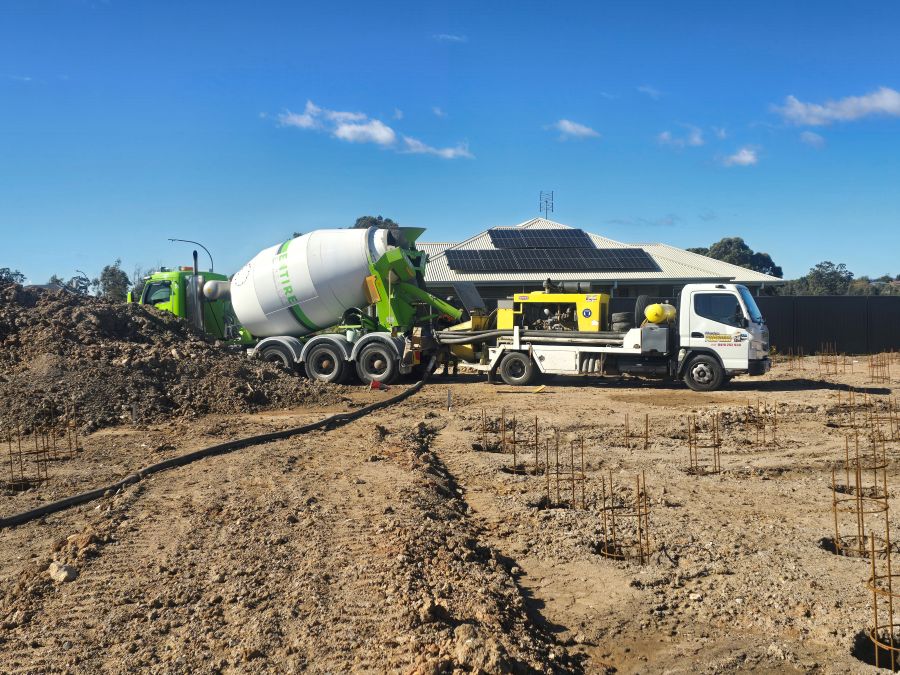Comprehensive Strategies to Maximize Safety in Concrete Pumping Operations for 2025
As we progress through the dynamic realm of concrete pumping safety in 2025, it is crucial to prioritize comprehensive training programs, diligent equipment inspections, well-defined exclusion zones, and thorough pre-start planning. Recognizing the inherent dangers associated with concrete pumping and following established safety protocols is vital for mitigating risks, preventing accidents, and ensuring that construction projects adhere to their timelines. By prioritizing these essential safety measures, workers can foster a secure working environment that not only enhances efficiency and productivity but also establishes a strong foundation for the successful completion of projects.

Recognizing and Mitigating Common Risks in Concrete Pumping Operations
According to SafeWork NSW, operators and crew members engaged in concrete placement encounter significant risks during the setup and operation of concrete pumps. Significant hazards can include:
- Unstable ground conditions or improper setup on sloped surfaces, which can lead to severe incidents.
- Using equipment beyond its design specifications, which dramatically increases the risk of mechanical failures.
- Proximity to overhead power lines, creating serious electrocution hazards.
- Collisions with trucks, structures, or on-site personnel, potentially resulting in serious injuries.
- Hose whip and line surges, which can create perilous situations if not managed appropriately.
- Unexpected equipment failures and blockages that may disrupt the workflow.
- Exposure to crush zones, diesel fumes, and elevated noise levels, adversely affecting health.
- Slip, trip, and confined space hazards that can lead to significant injuries.
These risks are not just theoretical; they frequently occur when safety protocols are neglected or inconsistently applied. Thus, our commitment is firmly rooted in emphasizing critical safety measures on-site, ensuring that every worker is thoroughly briefed and adheres to established protocols to create a safer working environment.
1. Prioritize Training and Certification for All Team Members to Ensure Safety
Considering the high-pressure environment of concrete pumps, strict handling requirements for operators are essential. In NSW, it is mandatory that operators hold:
- An HR licence for operating boom trucks, verifying their competence and qualifications.
- Verified VOCs (Verification of Competency) to confirm their skills and expertise.
- Training in hazard recognition and a detailed understanding of emergency stop procedures.
Additionally, hose handlers must participate in comprehensive briefings to ensure they avoid standing in discharge zones and can swiftly identify blockages, which is crucial for maintaining operational safety and preventing accidents.
2. Establish Clearly Defined Exclusion Zones to Enhance Safety Measures
Concrete under pressure moves quickly and can pose extreme risks if released unexpectedly. Therefore, it is vital to create clearly marked safety zones around the hose and boom at all times. Essential safety measures include:
- Implementing barriers and flagging to define risk areas surrounding the pumping operation.
- Prohibiting personnel from standing in front of the discharge area to prevent injuries.
- Restricting movements beneath booms to minimize the risk of accidents.
3. Perform Comprehensive Equipment Inspections Before Each Concrete Pour
Every concrete pumping task begins with a detailed equipment inspection. At Hunter Concrete Pumps, we conduct rigorous checks on:
- Hoses and reducers to ensure they are functioning optimally.
- Couplings and clamps to verify secure connections.
- The condition of the boom and seals to prevent any potential leaks.
- Primer levels, confirming that the pump operates smoothly and effectively.
- Emergency shutoff systems to ensure immediate response capabilities in the event of an incident.
No operation commences without the pump passing all inspections, reinforcing our steadfast commitment to safety and operational efficiency.
4. Designate a Lead Operator for Improved Coordination and Communication
Effective communication is essential for the success of concrete pumping operations. It is imperative for each crew to appoint one lead operator responsible for overseeing the pour and ensuring coordination with:
- Agitator drivers to synchronize operations for a smooth pour.
- Hose handlers who manage the flow of concrete safely and efficiently.
- Site supervisors to ensure strict compliance with site regulations.
- Concreters and finishers to achieve the desired project outcomes.
This clear chain of command is crucial for preventing errors and misfires, ultimately improving both the safety and efficiency of the operation.
5. Kick Off Every Pour with a Thorough Safety Briefing
Before initiating pump operations, it is vital that the crew discusses several key topics, including:
- Site access and hose routing for effective flow management.
- Emergency response plans and first aid protocols to ensure readiness.
- Truck staging and washout protocols to maintain site cleanliness and order.
- Identifying slip hazards and ensuring the proper use of PPE (Personal Protective Equipment) for each crew member.
- Defining the roles of spotters where necessary to further enhance safety.
At Hunter Concrete Pumps, we rigorously implement these protocols on every job, without exception, to ensure the safety of our crew and the integrity of the project.
Understanding the Critical Importance of Safety in Concrete Pumping Operations
Ensuring safe concrete pours not only protects your crew but also safeguards your project timeline, budget, and reputation. A lapse in safety can result in injuries, project delays, or regulatory scrutiny, which are risks that must be taken seriously. We strictly adhere to the SafeWork NSW guidelines for concrete pumping on every project. Our operators are not only trained but also licensed and insured, ensuring that when you choose our services, you are selecting a provider that integrates safety into every aspect of the process.
Is It Necessary to Employ Spotters or Safety Personnel for My Concrete Pour?
For both civil and commercial job sites, the answer is affirmative; spotters or safety personnel are essential for maintaining high safety standards. However, for residential projects, our dedicated pump crews are adept at managing safety zones effectively, ensuring the site remains secure. We will inform you of any specific requirements during the quoting process to ensure clarity and compliance.
What Are the Main Safety Risks Related to Concrete Pumping Jobs?
The three primary risks include untrained hose handling, inadequate access planning, and the lack of exclusion zones. We proactively address all three of these critical issues before the concrete pour begins, ensuring a safer working environment for everyone involved in the operation.
Experience Smooth and Safe Concrete Pours with Our Expertise
Concrete pumping safety is not just about adhering to extensive regulations; it is centered on ensuring that the job is completed without injuries or delays. When your team is well-versed in safety procedures, and your operator arrives fully equipped and prepared, the concrete pour can proceed seamlessly, swiftly, and without complications, setting the stage for successful project outcomes.
Concrete Pump Hire
The Article: Concrete Pumping Safety Protocols: 2025’s Top 5 Tips first appeared on https://writebuff.com
The Article Concrete Pumping Safety Tips: Top 5 Protocols for 2025 Was Found On https://limitsofstrategy.com
The Article Concrete Pumping Safety Tips for 2025: Top 5 Protocols First Appeared ON
: https://ad4sc.com

